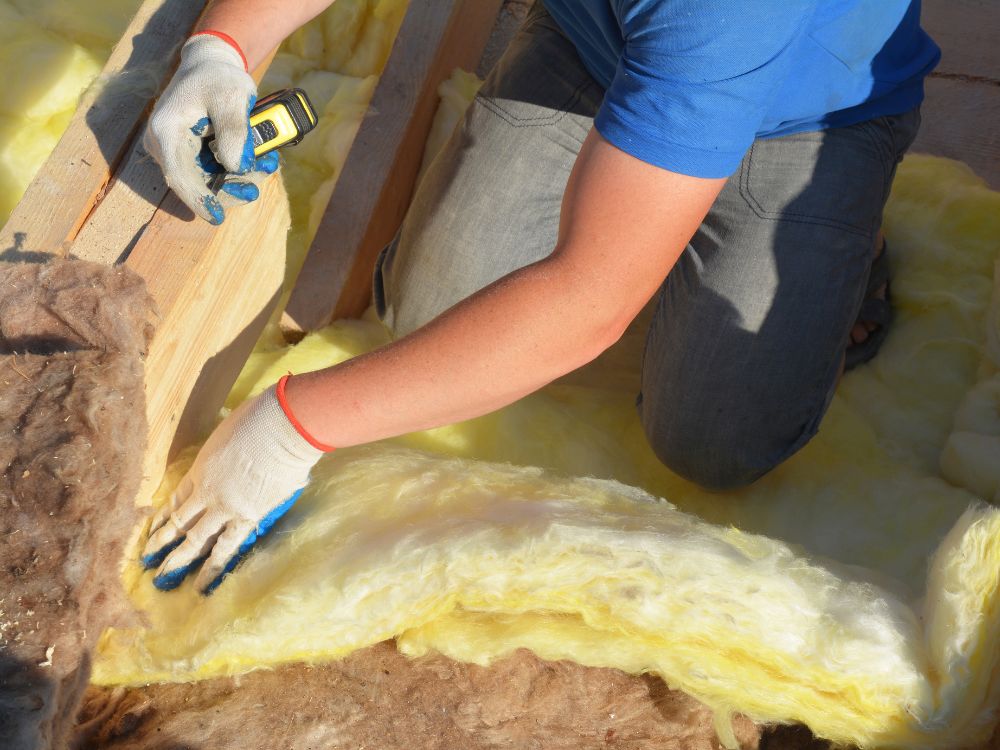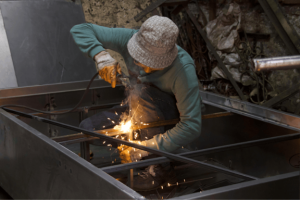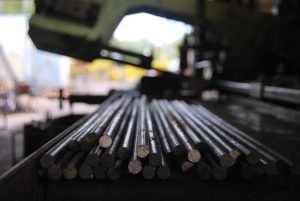Last Updated on October 16, 2025 by teamobn
Maintaining interior comfort while lowering energy costs depends critically on home insulation. Appropriate insulation helps keep heat inside during winter and prevents excess heat from entering in summer, significantly reducing electricity use.
Before diving into specific methods, it helps to understand which home upgrades make the most sense (ROI guide) so you can prioritize improvements that deliver the best long-term value. Your house’s construction and climate will determine which of the several insulating materials and techniques works best.
These five top home insulation ideas will help you boost energy efficiency and save money.
Contents
Top 5 Home Insulation Solutions
Choosing the proper home insulation can greatly affect energy savings and indoor comfort. Insulation helps regulate indoor temperatures, reduces strain on HVAC systems, and lowers utility bills. The best option depends on factors like budget, climate, and the area of your home that needs insulation.
Before committing to any installation, it’s worth asking: do you actually need more insulation? key signs to check. Understanding these signs first can help you avoid unnecessary upgrades and target only the areas that truly need improvement.
Here are five effective insulation solutions to consider.
- Fiberglass Insulation
- Fiberglass insulation is one of the most common and affordable options for homes. It comes in batts, rolls, or loose-fill forms and is typically used in walls, attics, and floors.
- This type of insulation is fire-resistant and provides good thermal performance when installed correctly. However, it requires proper handling, as the fibers can irritate the skin and lungs.
- Spray Foam Insulation
- Spray foam insulation is ideal for sealing gaps and preventing air leaks. It expands upon application, filling cavities and hard-to-reach areas that traditional insulation might miss.
- This option has a high R-value, making it an excellent energy-efficient choice. While it offers superior performance, it is more expensive and usually requires professional installation.
- Cellulose Insulation
- Made from recycled paper and fire retardant treatment, cellulose insulation is a green option. It’s quite good for insulating walls and attics especially and offers great coverage.
- Higher R-value than fiberglass, this insulation helps lower noise transfer. It might, however, settle over time and lose efficacy if improperly fitted.
- Rigid Foam Board Insulation
- Common rigid foam board insulation used are basements, outside walls, and foundation spaces. It is a fantastic choice for damp surroundings since it has strong thermal and moisture resistance.
- The boards can be readily cut to suit particular regions and vary in thickness. Although it has good insulating value, it could need extra sealing to stop air leakage.
- Reflective or Radiant Barrier Insulation
- Reflective insulation lowers heat transfer via radiation. It is particularly successful in warm regions when maintaining heat out of reach is a top concern.
- Often put in attics, this insulation reflects heat away from the house, maintaining the temperature of within spaces. Although it offers little conventional thermal resistance, it greatly lowers cooling expenses in hot weather.

To get the most out of your insulation investment, consider pairing it with smaller, high-impact updates. Simple additions like draft stoppers, LED lighting, and smart thermostats can amplify comfort and savings without stretching your budget. Explore more budget-friendly upgrades to pair with insulation to boost your home’s efficiency and overall value.
Why Home Insulation Matters
Maintaining a comfortable inside temperature and lowering energy use depend on appropriate home insulation. It serves as a barrier preventing too much heat in summer and slowing down heat flow, preserving warmth during winter. This lessens the load on heating and cooling systems, lowering energy usage and utility expenditures. Inadequate insulation causes temperature swings, drafts, and higher humidity in homes, compromising living areas and increasing maintenance costs.
Insulation shields the house from moisture damage and enhances indoor air quality outside of energy savings. Lowering condensation and decreasing air leaks, which bring allergens and pollutants, helps stop mold development. Good insulation also improves soundproofing, improving the quieter and more tranquil living conditions. Investing in proper insulation pays out in comfort, efficiency, and long-term savings, whether renovating an old house or insulating a new one.
How to Choose the Best Insulation for Your Home
Choosing the right insulation depends on multiple factors, including your home’s climate, budget, and construction type. Some insulation types work better in specific areas, while others provide additional benefits like soundproofing or moisture resistance. Understanding your options and evaluating their pros and cons can help you make an informed decision. Here’s what you need to consider when selecting the best insulation for your home.
Consider Your Climate
Your location plays a significant role in determining the most effective insulation. In colder climates, insulation with a high R-value is essential to retain heat and reduce heating costs.
Spray foam and rigid foam board insulation are excellent options because they provide strong thermal resistance and minimize air leaks. In warmer regions, reflective insulation or radiant barriers are ideal for keeping heat out and reducing the need for air conditioning.
A combination of insulation types can be necessary in areas with extreme temperature fluctuations, and understanding insulation by climate and R-value considerations can help you select materials that deliver the best comfort and energy return for your specific region.
Evaluate R-Value and Energy Efficiency
R-value measures an insulation material’s ability to resist heat flow. The higher the R-value, the better the insulation’s performance. Attics and exterior walls typically require insulation with higher R-values, while basements and crawl spaces can function with lower ratings. Following local building codes and energy efficiency recommendations when selecting insulation is important to ensure optimal performance. Investing in high-R-value insulation can lead to long-term savings by significantly lowering heating and cooling expenses.
Match Insulation Type to Home Areas
Different parts of your home require different types of insulation. Fiberglass batts and cellulose insulation are common choices for attics and walls because they provide good coverage and are cost-effective. Spray foam works well to seal gaps in hard-to-reach areas like windows, doors, and crawl spaces. Rigid foam board insulation is ideal for basements, foundations, and exterior walls where moisture resistance is a priority. Understanding the best application for each type ensures better efficiency and durability.
Compare Installation Methods
Home insulation can be installed as a DIY project or by professionals, depending on the type and complexity of the job. Homeowners with essential tools and protective gear can often install fiberglass batts, rigid foam boards, and cellulose insulation. However, spray foam and blown-in cellulose insulation require specialized equipment and experience, making professional installation a better choice. Hiring an expert can increase upfront costs but ensures proper installation and maximized energy savings over time.
Consider Moisture and Air Sealing Needs
Moisture control is crucial for maintaining insulation effectiveness and preventing mold growth. In areas prone to high humidity or water exposure, such as basements and crawl spaces, rigid foam boards and closed-cell spray foam are excellent choices because they resist moisture. Adding vapor barriers can further protect insulation and improve performance. Air sealing is equally essential, as even the best insulation won’t work efficiently if air leaks exist. Spray foam is highly effective in sealing gaps while caulking and weatherstripping can help in smaller areas.
Factor in Budget and Long-Term Savings
Initial costs for insulation vary widely, but long-term energy savings should be a key consideration. Fiberglass and cellulose insulation are more affordable upfront and still provide good thermal resistance. Spray foam, while more expensive, offers superior performance, better air sealing, and long-term energy savings. Investing in high-quality insulation can come with a higher initial price, but it can increase home value, reduce energy bills, and lower maintenance costs over time.
Think About Environmental Impact
Eco-friendly insulation options are becoming more popular among homeowners looking to reduce their carbon footprint. Cellulose insulation, made from recycled paper, is a sustainable option with excellent thermal properties. Wool and cotton insulation are natural alternatives that provide good insulation while being biodegradable. Though highly efficient, spray foam insulation contains chemicals that can not be environmentally friendly. Choosing insulation with low environmental impact can contribute to a more sustainable home.
Selecting the best insulation for your home requires careful consideration of climate, energy efficiency, installation methods, and budget. Investing in high-quality insulation improves indoor comfort, lowers energy bills, and enhances long-term home value. By choosing the right insulation type for each area of your home and addressing air sealing and moisture control, you can create a more efficient and comfortable living space.
Conclusion
Proper home insulation is essential for maintaining a comfortable interior temperature and lowering energy expenses. Depending on your house’s construction, budget, and climate, selecting the correct insulating type guarantees the best efficiency and long-term savings. Investing in quality insulation raises house value and sustainability, in addition to comfort.
Frequently Asked Questions
1. What’s the most cost-effective home upgrade for comfort and savings?
Insulation consistently delivers one of the best returns on investment. It helps your home stay warmer in winter and cooler in summer without overworking your heating or cooling systems. Even small improvements — like sealing gaps or adding attic insulation — can lead to noticeable comfort and energy savings.
2. Should I upgrade insulation or HVAC first?
Before investing in a new furnace or air conditioner, it’s important to know when to upgrade insulation before replacing HVAC. Often, improving insulation first can reduce the size and cost of the HVAC system you’ll need, saving money both upfront and long-term.
3. How do I know if my home needs better insulation?
Uneven room temperatures, cold drafts, or rising energy bills are telltale signs. You can also look for visual cues like thin or damp insulation in the attic or walls. If you’re unsure, a professional energy audit can help pinpoint problem areas.
4. What are quick, low-cost home improvements that really pay off?
Simple upgrades — like adding weatherstripping, switching to LED lighting, or installing programmable thermostats — offer fast comfort boosts and utility savings. For a broader list of small but impactful changes, explore our guide to budget-friendly home upgrades.
5. Can I DIY my insulation upgrade, or should I hire a professional?
That depends on the type of insulation and your comfort level with home projects. Batt or rolled insulation can be DIY-friendly, while spray foam or blown-in insulation typically requires special equipment and expertise for safe, effective installation.






